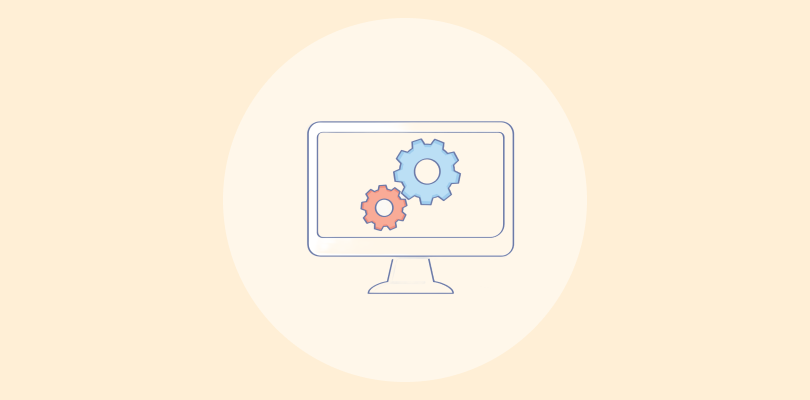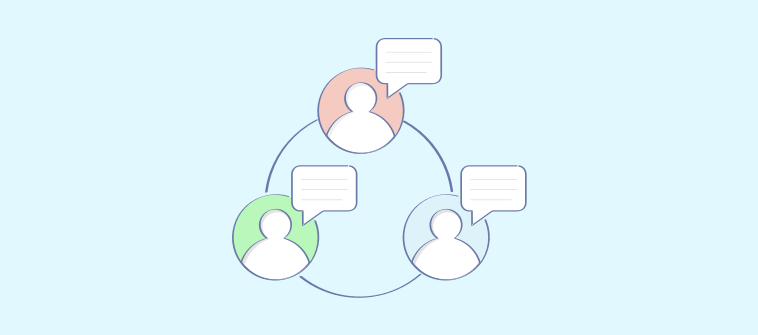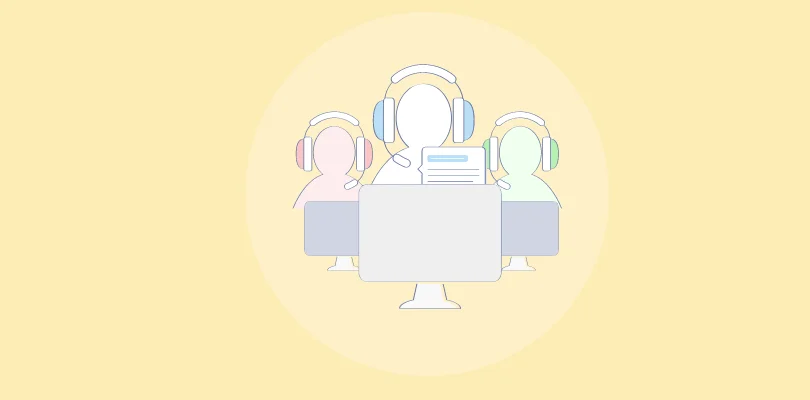If you look closely, you will find that all great inventions were born out of pain points. The pain of commuting on land was solved by aviation technology; real-time communication was made a reality via the internet.
Similarly, for 21st-century entrepreneurs to create everlasting products and woo a wider audience, they need to address customer pain points. The CEO of Yelp, Jeremy, expresses this idea the right way.
“Choose something you are passionate about – or a pain point that has affected you and that you feel really needs to be changed.” – Jeremy Stoppelman
From concerns around over-priced products and complicated checkout processes to uninterested customer service staff, your business should be able to resolve every customer pain point successfully.
Whether you wish to discover the common types of customer pain points or how you can track them using help desk software, this blog will offer everything you need. Towards the end, we will also look at 8 common pain points and their perfect solutions.
Stay tuned!
What Are Customer Pain Points?
Customer pain points are instances in the customer journey where they encounter a problem with a process, product, or service that hampers their experience with your brand. The presence of multiple pain points can impact how customers perceive your products and influence how they compare you with your business rivals.
By identifying and resolving customer pain points, your business can create the right value proposition to attract prospective customers and retain existing ones.
However, realizing pain points isn’t as easy as it might sound. Sometimes, even customers don’t know what they are struggling with or what solution they are looking for. Your sales, support, and marketing departments must join hands in understanding customer pain points to create a win-win situation for everyone.
Types of Customer Pain Points
All the different customer pain points can be divided into four broad categories: productivity, financial, support, and process. Let’s explore the different types of customer pain points with the help of appropriate examples.
1. Productivity Pain Points
Customers face productivity pain points when they aren’t able to get the desired results from your product in the expected time frame. In this category, customers face dissatisfaction when the product is either too complex to operate or requires too many steps to get started with. To come across as a business that values customers’ time, you must quickly look for ways to resolve productivity pain points.
Example: A business launches a music subscription app. However, complex UI, frequent advertisements, and slow loading speeds frustrate customers. They are not able to easily search for or enjoy listening to their favorite music.
2. Financial Pain Points
Financial pain points occur when customers feel the current products or services they use are costing them too much. Customers experience this pain point when your products are more expensive than your competitors or when your pricing structure includes multiple hidden charges. Financial limitations stop customers from repurchasing from your brand, leading to a high customer churn rate.
Example: An e-commerce company adds the latest smartphone to its online store. The latest model soon strikes customer interest. However, customers get frustrated when they encounter additional costs of shipping and insurance during the checkout process.
3. Support Pain Points
This is one of the most common types of customer pain points. Customers face support pain points when they are not able to get the desired assistance from your team when they need help. They might not receive the expected help from sales reps while browsing your products or technical assistance after the purchase.
Example: An online store offers the best fashion collection in the market. When customers visit the website, they are not able to get real-time assistance with their questions about product delivery, return policies, available discounts, etc.
4. Process Pain Points
Customers experience process pain points when there are major issues in your company’s internal processes. Just like productivity pain points, process points can lead to time wastage and frustration.
Example: A customer recently bought a double-door refrigerator from a nearby retail store. At the time of purchase, the sales representative promised next-day delivery and installation. However, the product was delivered a week later due to inventory mismanagement.
How to Identify Customer Pain Points
Before you begin to fix customer problems, you need to know what they are in the first place. Here are some popular ways to identify customer pain points:
- Share Surveys: An online survey is an excellent tool to identify and understand customer pain points. You can share periodic surveys with existing customers that include important sets of questions. For example, you can include open-ended questions in your surveys, such as, “How can we further improve our products?”
Read More: Open-Ended Survey Questions: The Key to Collecting Qualitative Data
- Monitor Online Reviews: Online reviews can give you a fair idea about what customers think about your products, services, or the overall experience of engaging with your brand. You can search for reviews on your own website or other e-commerce marketplaces such as Amazon, eBay, etc. Low-rated reviews can help you identify customer pain points.
- Conduct Interviews: During customer interviews, any of your team member can ask a small list of questions to customers to get to the root of their pain points. Interviews don’t have to be too formal or an hour long. The interviewer must try to make the customer feel comfortable, and you can always share appropriate discounts or freebies to appreciate their time.
8 Common Customer Pain Points ( And Their Respective Solutions)
We understand that every business is unique, and so are its audiences’ pain points. However, some problems are pretty common across industries and business sizes.
Here is a list of customer pain points that you will find common among most businesses:
1. Slow Response Times
Slow or delayed responses are one of the most popular customer pain point examples. After all, we know how bad it feels to wait for days or weeks for a single email reply or a call back from a company.
According to Statista, 62% of customers said they expect brands to respond to their emails within 24 hours.
If you keep a customer complaint or request pending for a long time, it can hamper their experience. When a customer is made to wait more than the expected time, you are basically making them relive their frustration again and again.
Here are some steps you can take to speed up your response time:
- Automate tasks with help desk software: With cloud-based help desk software, you can automate repetitive tasks such as ticket creation, assignment, and prioritization. Moreover, agents can use customer service canned messages to speed up response times.
- Deploy chatbots on your website: If your CS team operates from 9-5, you can deploy powerful chatbots that can assist and interact with website visitors 24×7. Intelligent bots can answer routine queries in seconds, generate leads, and transfer the conversation to a human operator if required.
- Alert agents on tickets nearing SLA breach: Many times, agents have no idea which tickets have been lying in the inbox and for how long. You can share automated alerts with them on tickets nearing SLA breach so they can prioritize such issues.
Read More: How to Speed up Ticket Response Time With Help Desk Software
2. Long or Complicated Checkout Process
Imagine, after hours of scrolling an online store, you finally found what you were looking for. However, the excitement soon faded when you came across a slow and never-ending checkout process.
According to the Baymard Institute, a long or complicated checkout process is the reason why around 26% of online shoppers abandon their carts.
A well-streamlined checkout process reduces cart drop-offs and increases conversion rates. Here are some steps you can follow to achieve the same:
- Offer guest checkout options: Many e-commerce stores require customers to create an account first before they can proceed with checkout. You must offer guest checkout options, as creating a fresh account may be too much of a commitment for customers.
- Provide multiple shipping options: A majority of customers abandon their carts due to unexpected prices, such as shipping costs. While this does not mean you should offer free shipping, you can always provide different shipping options to accommodate all your potential buyers.
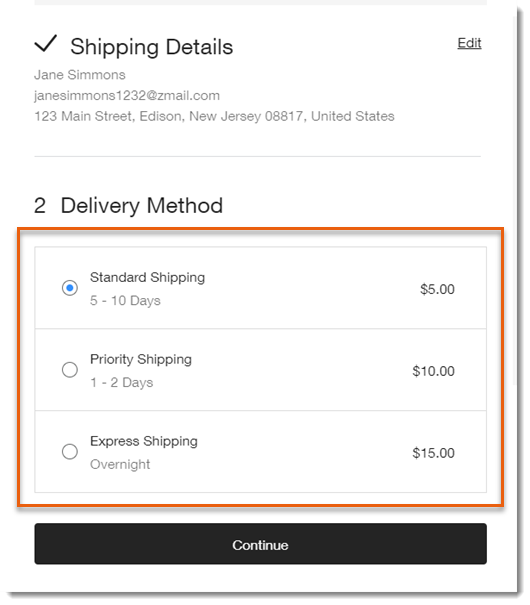
- Remember their preferred payment methods: Customers should not have to fill in their details, such as credit card numbers, every time they buy from you. Save their payment details and methods to ensure a smooth checkout process.
3. Rude or Impolite Employee
It is important to treat your customers well, so they keep coming back. However, some employees might have other plans. Even a single instance where a customer is disrespected or verbally abused can prove to be detrimental to your brand reputation.
Whether a customer interacts for the first time with a sales representative or seeks after-sales support from a customer service agent, they demand a smooth and respectful interaction.
Friendly customer service agents, who create a memorable experience, encourage 73% of consumers to stick with a business.
Here are some steps to deal with disrespectful staff members:
- Arrange soft skills training sessions: Soft skills such as empathy, active listening, patience, adaptability, etc., can go a long way in dealing with unhappy customers. For example, an employee can empathize with the customer to make them feel their problems matter and are taken seriously.
- Offer constructive feedback: Instead of complaining about such team members, offer them constructive feedback. Explain the underlying problem and the steps they need to take to improve their behavior. Also, recognize and reward those employees who show the ideal behavior with customers.
- Record incidents: Maintain a clear record of your employees’ poor behavior. This will prove to be useful when you are forced to make any serious decisions, such as firing an individual. Moreover, let employees know that every chat, email, or phone conversation is monitored regularly.
Read More: 10 Customer Complaint Response Templates that Work Like a Charm
4. Poor Website Navigation
When people land on your website, they should not feel like wanderers in the Sahara desert. A poorly designed website, where all important information is scattered, can hamper the customer experience.
Website navigation refers to a collection of UI (user interface) elements that help visitors find features and content on a website.
Let’s say you visit a site and are unable to locate the “contact us” page, or you click on a drop-down menu only to realize it displays more than 20 options. All these are examples of poor website navigation.
Here are some steps to improve your website navigation:
- Incorporate necessary call-to-actions: Strategically placed CTAs can help you direct visitors to where you want them to be. Instead of losing visitors, you can encourage them to fill out specific forms, register for webinars, or share links to your content.
- Keep the menu simple: Visitors don’t necessarily have the time to go through a long menu. Try to limit your menu to seven to eight options so it is easily scannable. Concise menus can also help with SEO and get your website more traffic.
- Add a back-to-top button: If you have a long landing page, try adding a back-to-top icon. This will allow visitors to quickly return to the main section of the website without having to scroll all the way up tirelessly.
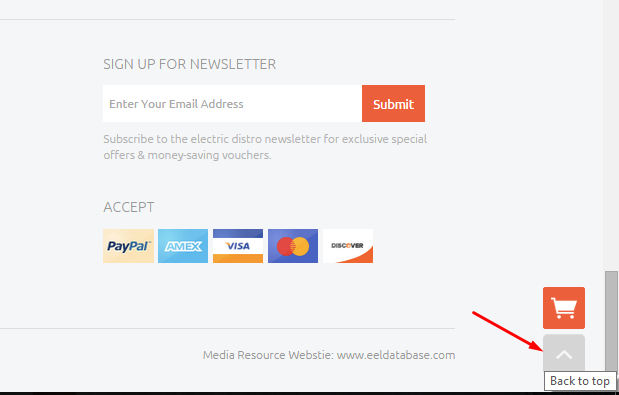
5. Product Unavailability
“The product is out of stock.” Whether you run a retail outlet or an online store, product non-availability can be extremely frustrating for customers.
When customers encounter that their favorite products are out-of-stock, they are left with no other choice but to switch to a business rival.
Product unavailability, if not handled properly, can lead to lost sales and, in some cases, lost opportunities. Here are some steps you can take to avoid losing the customer forever:
- Show alternative products that are in stock: If you show alternative products to customers, you can prevent them from leaving your website and buying from somewhere else. If you run an offline store, you can direct the customer to the nearest store where the product is available.
- Notify interested customers when a product is available: Many online retailers notify customers when a product is back in stock via email or SMS alerts. For this, you can place a simple CTA on the product page – “Alert me when in stock” or something similar.
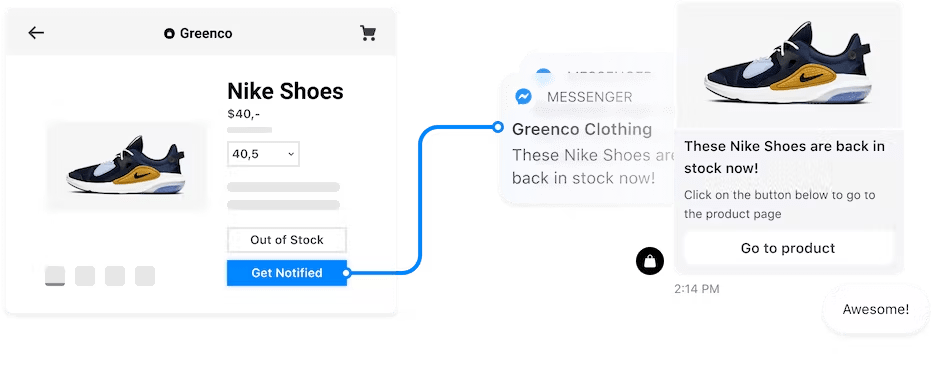
- Be a little creative: If you know the product will be back soon, you can place a small timer (counting down to the availability date) on your website. This will spark some excitement in your customers and allow them to buy your product in advance.
Read More: The E-commerce Guide: How to Tackle eCommerce Customer Pain Points
6. Lack of Self-Service Content
Modern customers love to engage with brands that care about their time. On most occasions, they don’t want to wait till they are connected to a human agent. Instead, they would prefer to do some online research to find solutions on their own.
77% of customers view businesses more positively if they provide self-service options that can save time and reduce efforts.
From the business perspective, offering self-service options would mean fewer calls or emails to your support team. Support agents will have more time to focus on critical issues and make every interaction count.
Here is how you can enhance the customer self-service experience:
- Create a detailed FAQ page: With customer support software, you can create a well-designed FAQ page to help customers with their routine questions related to pricing, return policies, password resets, and more. Moreover, these FAQs can be selected by Google snippets and shown to those that search for their question directly on Google.
- Build an online community: An online community forum is another great platform where customers and prospects can interact with each other. They can even raise questions, participate in discussions, view the latest updates, and share their unique experiences.
Read More: 10 Common Customer Service Problems and How to Resolve Them
7. Receiving a Defective Product
When a product fails to meet customer expectations, you will definitely get to hear about it. The customer might complain about a broken product or a feature that does not work as promised.
If you are lucky, the customer will contact you directly and share the concern. The worst-case scenario would be to see a negative review post or Tweet that goes viral.
When a broken or faulty product is delivered to the customer, your business might not be at fault. Accidents happen, and any product can get damaged in transit. However, the first thing you need to do is own your mistake.
- Share a sincere apology: Even if you feel it’s not your fault, you need to apologize to the customer for the poor experience. Explain what went wrong and how you plan to fix the problem.
- Offer a refund or replacement: Depending on the situation, you can offer a full or partial refund. However, if the customer is fine with product replacement, you can go ahead with that too. In addition, you can include a discount coupon that can be used during future purchases.
- Check with your product team: If multiple customers report a faulty product feature, you might want to connect with your product team to understand the underlying issue. Once the problem is fixed, you can roll out the product again.
Read More: 10 Templates to Write the Best Apology Emails to Customers
8. Issue Not Resolved in First Call
Ever tried contacting a business with your problem only to receive another helpline number or be directed to another department? Yes, we have all been there.
First call resolution (FCR), as the name suggests, refers to the percentage of customer service calls that are resolved on the first attempt. The customers are not required to make multiple calls for a single issue.
When people are required to call your team multiple times for a single issue, their hopes and expectations are shattered. They lose trust in your brand and may end up sharing negative reviews.
On the other hand, when you prioritize FCR, your business can prevent up to 67% of customer churn. Let’s see how you can achieve this.
- Reduce training gaps: If customer service reps aren’t trained properly, they will not be able to fix issues in a single attempt. They will always rely on seniors for assistance or ask customers to call again so they can figure out the problem. Proper and consistent training will empower agents and help you boost FCR rates.
- Monitor FCR & other metrics: FCR is a critical help desk metric that you should track from time to time. This will allow agents to understand what is expected of them. In addition, you can prioritize other equally important metrics such as ticket resolution time, average response time, customer satisfaction, etc.
Fix Customer Pain Points to Create a Win-Win Situation
There is no quick fix for customer pain points. However, when you show sheer dedication in identifying customer problems and resolving them, you can create a win-win situation for everyone. On the one hand, customers can have a seamless shopping experience, on the other hand, you can boost customer loyalty and revenue.
Some common pain points include slow response times, rude or impolite staff members, faulty products, poor website design, etc. Each pain points demand a unique solution so that their elimination can lead to improved experiences.
Is there a tool to handle all support pain points? We are glad you asked! ProProfs Help Desk can help you automate your process to prevent customer frustration with slow response times. Moreover, you can empower customers by making self-service available 24×7.
FREE. All Features. FOREVER!
Try our Forever FREE account with all premium features!



